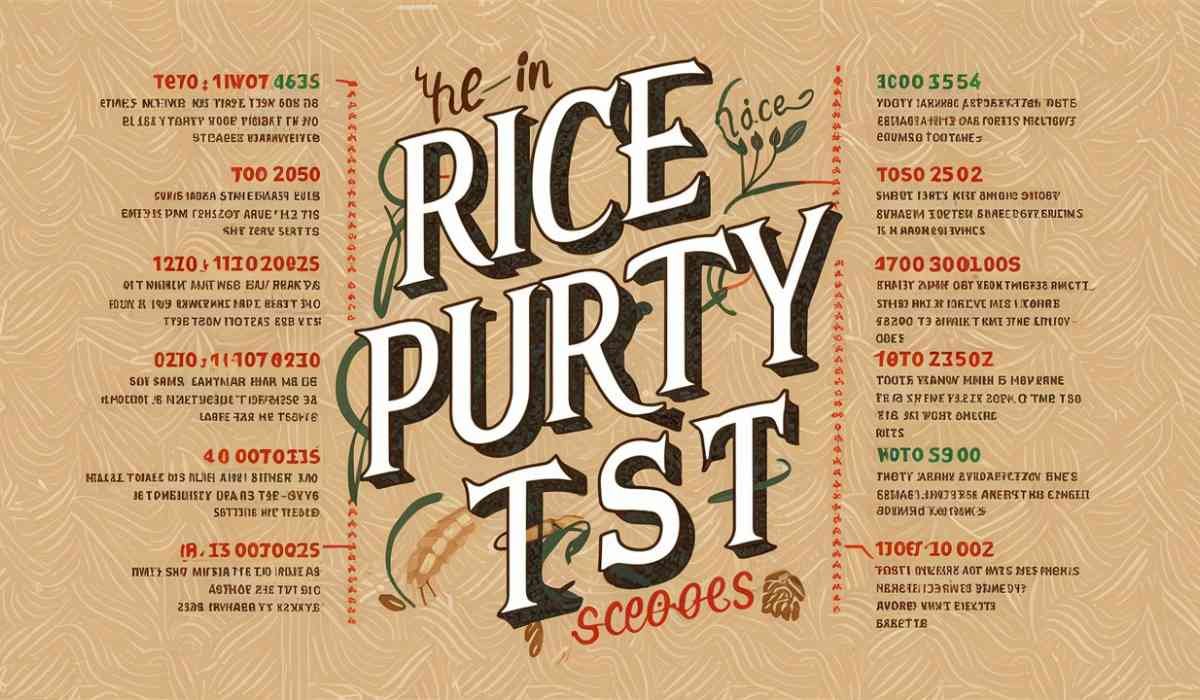The Rice Purity Test, commonly known as the “Innocence Test,” has intrigued college students and internet users alike for decades.
Originating at Rice University, this self-graded survey consists of 100 questions that assess a participant’s innocence in various activities often deemed vices, such as sex, drugs, and deceit.
This article delves into the history, significance, and modern relevance of the Rice Purity Test, providing a detailed overview that caters to the curious minds of today.
What Is The Rice Purity Test?
The Rice Purity Test is a questionnaire designed to gauge a person’s experiences and behaviors, offering a percentage score with 0% representing the least pure and 100% the purest.
Initially, the test was a bonding exercise for new students at Rice University, fostering connections among peers by sharing their levels of “worldly” experience.
Today, it serves primarily as a fun, introspective activity to reflect on one’s past experiences.
The Origins And Evolution of The Rice Purity Test

The concept of purity tests dates back to at least 1936, with the earliest documented instance being the “Purity Test” administered to students at various institutions.
The Rice Purity Test specifically became a tradition at Rice University, particularly during O-Week (Orientation Week), helping students transition into college life by sharing their experiences.
Over the years, the test has evolved. Originally a simple paper questionnaire, it has now become an interactive online quiz, with enhancements in question design and result analysis.
The modern version includes updates and statistical reports, making it more engaging for users.
Understanding The Rice Purity Test Scores
Interpreting Rice Purity Test scores can be fascinating and somewhat revealing. Here’s a breakdown of what the scores typically mean:
- 100: You are extremely innocent, perhaps the most on the planet.
- 99-95: Very pure, indicating limited exposure to the listed activities.
- 94-90: Relatively pure, similar to the average test-taker.
- 89-70: Moderately experienced, with some engagement in “crazy” activities.
- 69-50: Enjoys adult activities and has significant worldly experience.
- 49-20: Below average in purity, heavily engaged in adult behaviors.
- 19-10: Far below average, possibly involving criminal activities.
- 9-1: Extremely experienced in vices, with very low innocence.
- 0: The least pure, indicating extensive engagement in all listed activities.
Average Rice Purity Scores Across Demographics
Analyzing Rice Purity Test scores can provide interesting insights into different demographic groups. Here are some average scores based on various categories:
- By Age:
- Under 18: 91.12
- 18-24: 88.30 (Females: 89.24, Males: 87.36)
- 25-34: 76.86 (Females: 79.68, Males: 74.05)
- 35-44: 71.07 (Females: 71.11, Males: 71.03)
- 45-54: 65.01 (Females: 67.19, Males: 62.83)
- 55-64: 63.67 (Females: 66.22, Males: 61.12)
- 65+: 61.86 (Females: 65.39, Males: 58.33)
- By Continent:
- Asia: 67
- Africa: 60
- North America: 62
- South America: 58
- Europe: 59
- Oceania: 62
- Antarctica (Estimated): 65
- By Country:
- United States: 63.9
- United Kingdom: 65.7
- Canada: 61.0
- Australia: 64.3
- Japan: 66.6
- Various other countries average between 57.4 and 66.6
The Modern Significance of The Rice Purity Test

In today’s digital age, the Rice Purity Test has become a viral phenomenon.
Its popularity can be attributed to its ability to offer a glimpse into the shared experiences and behaviors of different individuals.
The test has been updated to remain relevant, with new questions and an improved interface that allows users to revisit and modify their answers.
Moreover, the test serves as a conversational starter, helping individuals bond over shared experiences or surprising revelations. While the test is for entertainment purposes only, it sparks discussions about societal norms and personal boundaries.
Conclusion
The Rice Purity Test remains a fascinating and engaging activity for individuals looking to explore and compare their life experiences.
Its rich history and evolving nature have kept it relevant, making it a staple in college culture and beyond. Whether you score high or low, remember that the test is a fun tool for reflection and should be enjoyed in that spirit.
FAQs
What is the Rice Purity Test?
The Rice Purity Test is a 100-question survey that assesses a participant’s innocence in various activities, originally created for new students at Rice University.
How is the test scored?
Scores range from 0% to 100%, with 0% being the least pure and 100% being the most pure.
Is the Rice Purity Test safe?
Yes and no. While it is popular and widely taken, some questions may involve mature content that some users might find inappropriate.
Can I retake the test?
Yes, the test can be taken multiple times, and the modern version allows users to revisit and modify their answers.
What is the significance of my score?
The score is a reflection of past experiences and should be taken lightly. It’s a fun way to see how your experiences compare to others.
Why is it called the Rice Purity Test?
The test originated at Rice University and was initially used as a bonding activity for new students during O-Week.
How often is the test updated?
The test has seen various updates to its questions and interface, with the most recent updates improving user experience and statistical analysis.
What should I do if I score low?
A low score is not a judgment of character. The test is for entertainment purposes and does not reflect one’s value or purity.




